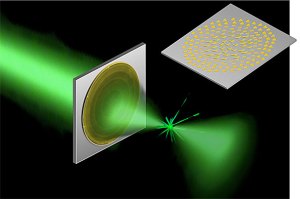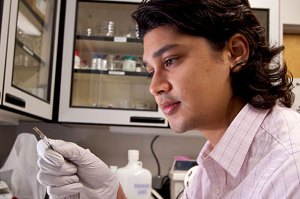Tag: Nanotechnology
-
Science & Tech
The future of mind control
A new paper explores why neuron-like implants could offer a better way to treat brain disorders, control prosthetics, or even enhance cognitive abilities.
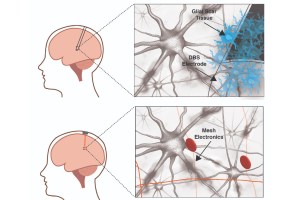
-
Science & Tech
A new spin on an old question
Understanding how DNA and proteins interact — or fail to — could help answer fundamental biological questions about human health and disease.
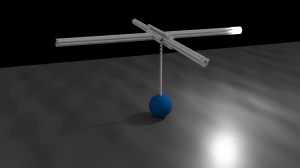
-
Science & Tech
Combing out a tangled problem
A new technique speeds creation of nanowire devices, boosting research into what’s happening inside cells.

-
Science & Tech
Tiny wires, great potential
Harvard scientists have developed a method for creating a class of nanowires that could one day see applications in everything from consumer electronics to solar panels.
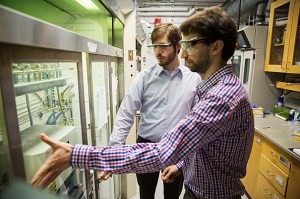
-
Science & Tech
Injectable device delivers nano-view of the brain
An international team of researchers has developed a method of fabricating nanoscale electronic scaffolds that can be injected via syringe. The scaffolds can then be connected to devices and used to monitor neural activity, stimulate tissues, or even promote regeneration of neurons.
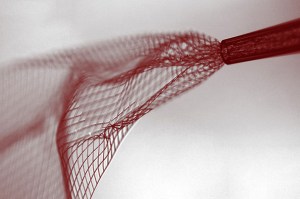
-
Health
A tiny, time-released treatment
Targeted nanotherapy is the wave of the medical future, according to Omid Farokhzad, a Harvard Medical School and Brigham and Women’s Hospital researcher who has two nanoparticle-based therapies in clinical trials and a slew of ideas for new ways to put the tiny capsules to work for human health.

-
Science & Tech
Merging the biological, electronic
For the first time, Harvard scientists have created a type of cyborg tissue by embedding a 3-D network of functional, biocompatible, nanoscale wires into engineered human tissues.
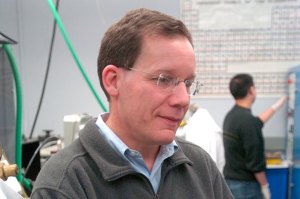
-
Science & Tech
Nanoparticles shine with customizable color
Engineers at Harvard have demonstrated a new kind of tunable color filter that uses optical nanoantennas to obtain precise control of color output. The advance has the potential for application in televisions and biological imaging, and could even be used to create invisible security tags to mark currency.

-
Science & Tech
Molecules as motors
Scientists from around the world gathered at the Radcliffe Institute for Advanced Study Oct. 14 for a symposium on advancing efforts to study and design molecules as motors.

-
Campus & Community
AIMBE inducts Ingber to College of Fellows
The Wyss Institute for Biologically Inspired Engineering at Harvard University announced on Feb. 4 that its founding director, Donald E. Ingber, has been inducted into the American Institute for Medical and Biological Engineering’s College of Fellows.

-
Science & Tech
Innovate, create
From oddities like breathable chocolate to history-making devices with profound societal effects, like the heart pacemaker, Harvard’s combination of questing minds, restless spirits, and intellectual seekers fosters creativity and innovation that’s finding an outlet in new inventions and companies.
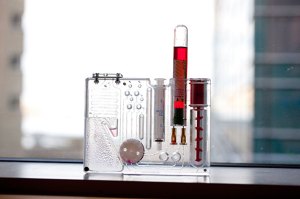
-
Science & Tech
By ‘putting a ring on it,’ microparticles can be captured
To trap and hold tiny microparticles, research engineers at Harvard have “put a ring on it,” using a silicon-based circular resonator to confine particles stably for up to several minutes.
-
Health
Improving a cancer drug
Researchers, led by Harvard Medical School Assistant Professor Shiladitya Sengupta, have devised a way to improve a low-cost, effective cancer drug, cisplatin, whose use has been limited by its toxicity.

-
Science & Tech
Replicating nature’s design principles
In nature, cells and tissues assemble and organize themselves within a matrix of protein fibers that ultimately determines their structure and function, such as the elasticity of skin and the contractility of heart tissue. These natural design principles have now been successfully replicated in the lab by bioengineers at Harvard’s Wyss Institute for Biologically Inspired…
-
Science & Tech
Applied physicists create building blocks for a new class of optical circuits
Imagine creating novel devices with amazing and exotic optical properties not found in nature — by simply evaporating a droplet of particles on a surface. By chemically building clusters of…
-
Science & Tech
Cold atoms and nanotubes come together in an atomic ‘black hole’
Carbon nanotubes, long touted for applications in materials and electronics, may also be the stuff of atomic-scale black holes. Physicists at Harvard University have found that a high-voltage nanotube can…
-
Science & Tech
Digging deep into diamonds
By creating diamond-based nanowire devices, a team of Harvard researchers has taken another step toward making applications based on quantum science and technology possible.
-
Health
Nanowires go 2-D, 3-D
Taking nanomaterials to a new level of structural complexity, scientists have determined how to introduce kinks into arrow-straight nanowires, transforming them into zigzagging two- and three-dimensional structures with correspondingly advanced functions.
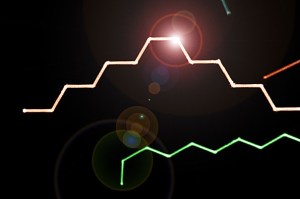
-
Science & Tech
Harvard scientists bend nanowires into 2-D and 3-D structures
Taking nanomaterials to a new level of structural complexity, Harvard researchers have determined how to introduce kinks into arrow-straight nanowires, transforming them into zigzagging two- and three-dimensional structures with correspondingly…
-
Science & Tech
Scientists create custom three-dimensional structures with ‘DNA origami’
By combining the art of origami with nanotechnology, Dana-Farber Cancer Institute researchers have folded sheets of DNA into multilayered objects with dimensions thousands of times smaller than the thickness of…
-
Science & Tech
Spiral swimmers may prove micro workhorses
Harvard researchers have created a new type of microscopic swimmer: a magnetized spiral that corkscrews through liquids and is able to deliver chemicals and push loads larger than itself. Though…
-
Science & Tech
Researchers control the assembly of nanobristles into helical clusters
From the structure of DNA to nautical rope to distant spiral galaxies, helical forms are as useful as they are abundant in nature and manufacturing alike. Researchers at Harvard’s School…
-
Science & Tech
NHGRI/NIH awards team $6.5M to advance DNA sequencing using Nanopores
The National Human Genome Research Institute (NHGRI), part of the National Institutes of Health (NIH), awarded a $6.5 (over 4 years) grant to a team of Harvard University researchers to…
-
Science & Tech
Researchers develop new technique for fabricating nanowire circuits
Scientists at Harvard’s School of Engineering and Applied Sciences (SEAS), collaborating collaborating with researchers from the German universities of Jena, Gottingen, and Bremen, have developed a new technique for fabricating…
-
Science & Tech
Compact, wavelength-on-demand Quantum Cascade Laser chip created
Engineers at Harvard’s School of Engineering and Applied Sciences have demonstrated a highly versatile, compact and portable Quantum Cascade Laser sensor for the fast detection of a large number of…
-
Health
Microchip-based device can detect rare tumor cells in bloodstream
A team of investigators from the Massachusetts General Hospital (MGH) BioMicroElectroMechanical Systems (BioMEMS) Resource Center and the MGH Cancer Center has developed a microchip-based device that can isolate, enumerate and…
-
Science & Tech
Nanowire generates its own electricity
Harvard chemists have built a new wire out of photosensitive materials that is hundreds of times smaller than a human hair. The wire not only carries electricity to be used…
-
Science & Tech
Making the world’s smallest gadgets even smaller
You may not have noticed, but the smallest revolution in world history is under way. Laboratories and factories have begun to make medical sensors and computer-chip components smaller than a…



